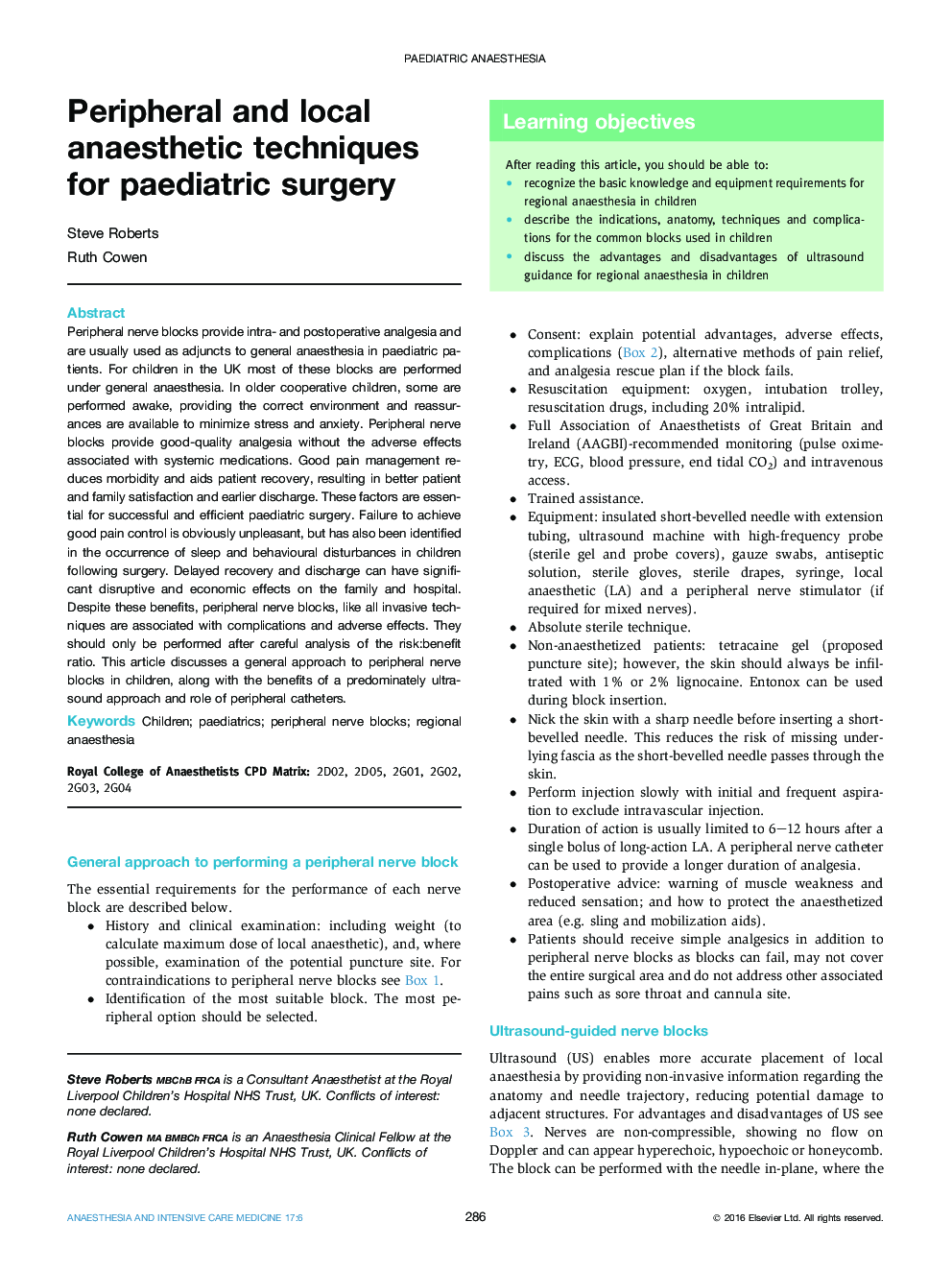| Article ID | Journal | Published Year | Pages | File Type |
|---|---|---|---|---|
| 2742166 | Anaesthesia & Intensive Care Medicine | 2016 | 7 Pages |
Peripheral nerve blocks provide intra- and postoperative analgesia and are usually used as adjuncts to general anaesthesia in paediatric patients. For children in the UK most of these blocks are performed under general anaesthesia. In older cooperative children, some are performed awake, providing the correct environment and reassurances are available to minimize stress and anxiety. Peripheral nerve blocks provide good-quality analgesia without the adverse effects associated with systemic medications. Good pain management reduces morbidity and aids patient recovery, resulting in better patient and family satisfaction and earlier discharge. These factors are essential for successful and efficient paediatric surgery. Failure to achieve good pain control is obviously unpleasant, but has also been identified in the occurrence of sleep and behavioural disturbances in children following surgery. Delayed recovery and discharge can have significant disruptive and economic effects on the family and hospital. Despite these benefits, peripheral nerve blocks, like all invasive techniques are associated with complications and adverse effects. They should only be performed after careful analysis of the risk:benefit ratio. This article discusses a general approach to peripheral nerve blocks in children, along with the benefits of a predominately ultrasound approach and role of peripheral catheters.
